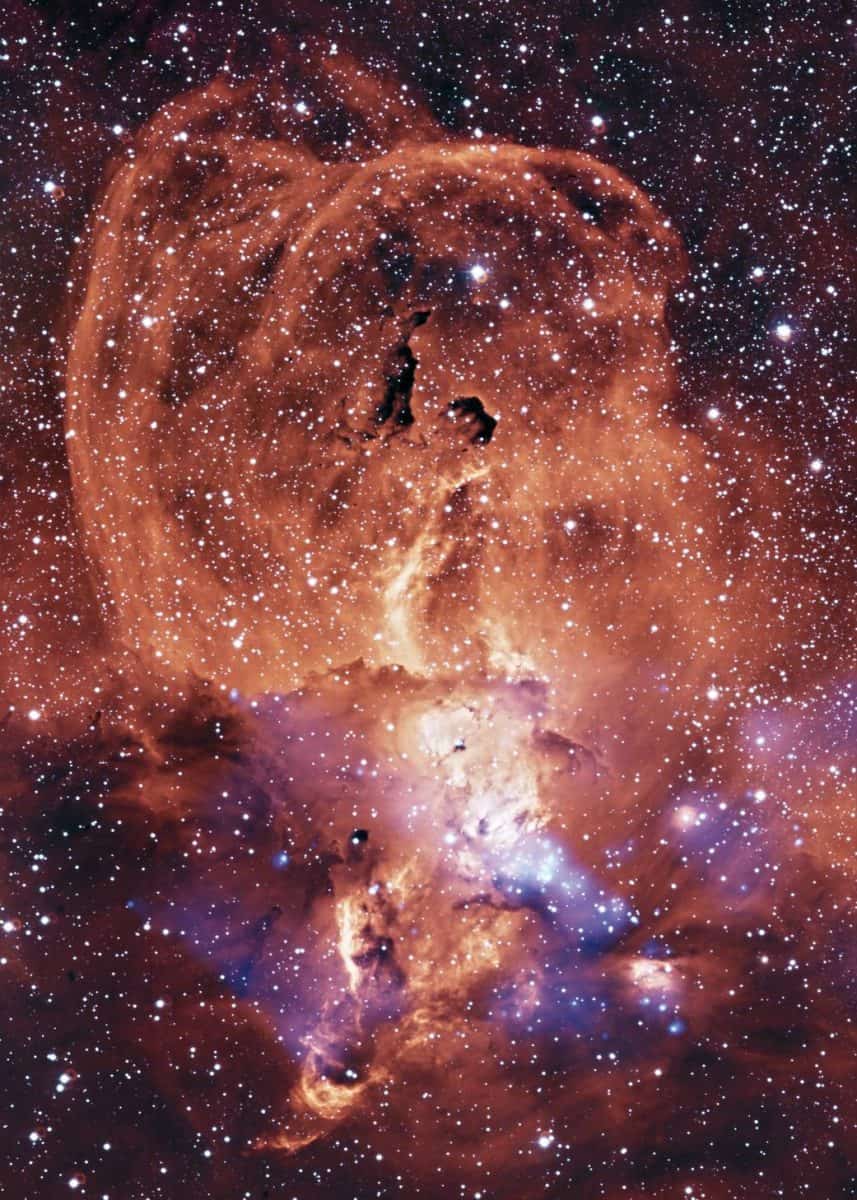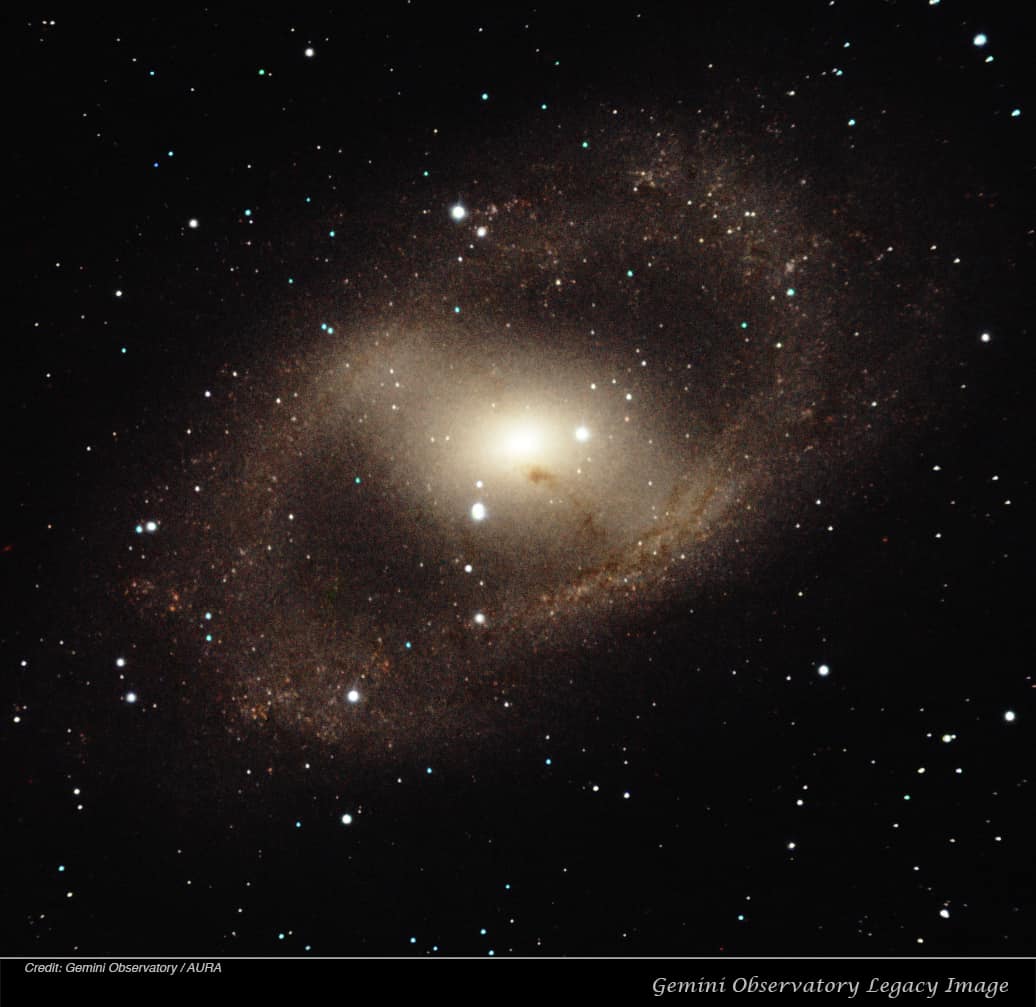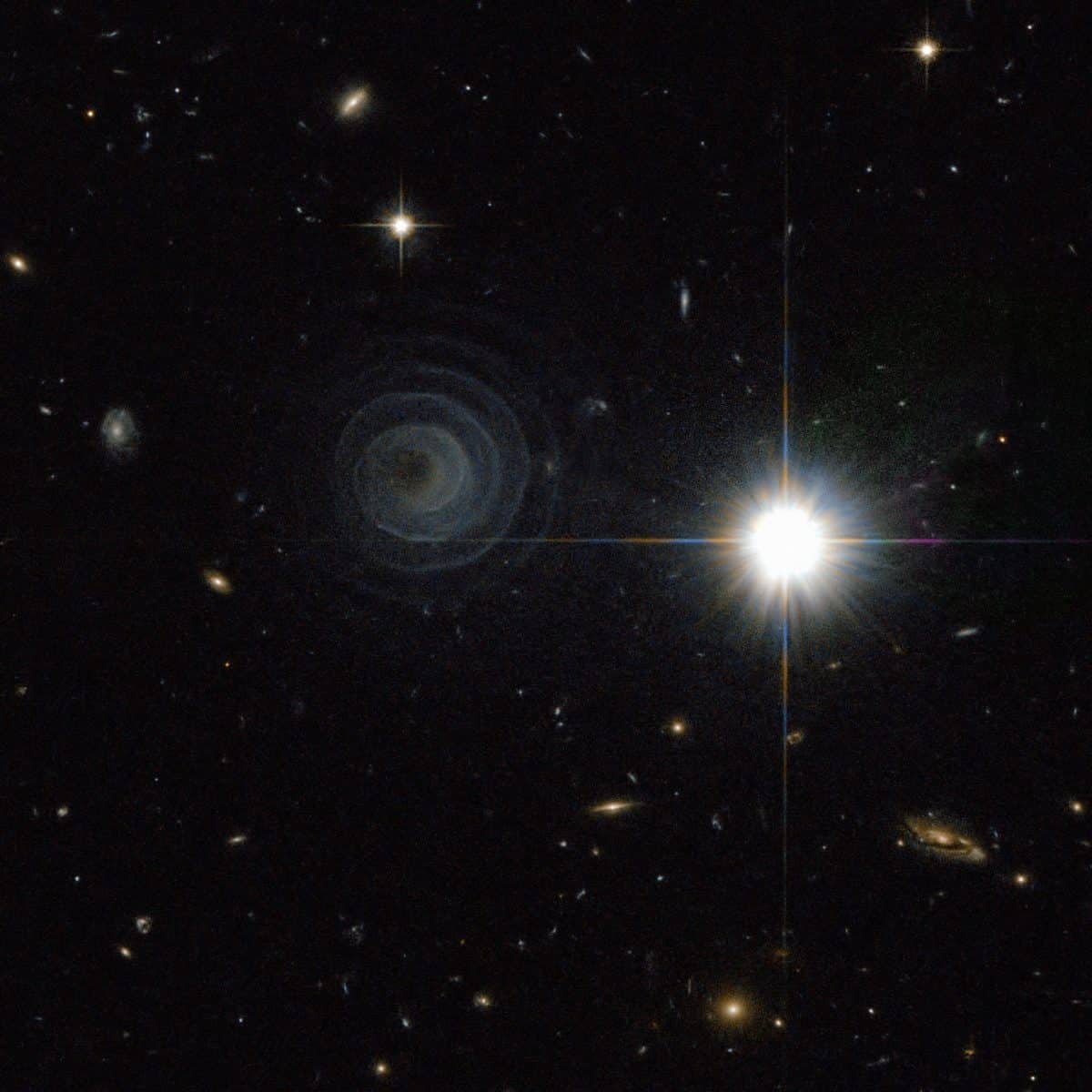https://www.youtube.com/watch?v=blHNjVk2ORw
see full post...NGC 3576 is a minor nebula in the Sagittarius arm of the galaxy a few thousand light-years away from the Eta Carinae nebula. This nebula even received six different classification numbers. Currently, astronomers call the entire nebula NGC 3576. A popular nickname is “The Statue of Liberty Nebula” because of the distinctive shape in the middle of the nebula. The name was first suggested in 2009 by Dr. Steve Mazlin, a member of Star Shadows Remote Observatory (SSRO).
6,000 ly distance.
see full post...
Béla Anton Leoš Fleck (born July 10, 1958) is an American banjo player. An innovative and technically proficient banjo player, he is best known for his work with the bands New Grass Revival and Béla Fleck and the Flecktones.
A native of New York City, Fleck was named after Hungarian composer Béla Bartók, Austrian composer Anton Webern, and Czech composer Leoš Janáček. He was drawn to the banjo at a young age when he heard Earl Scruggs play the theme song for the television show Beverly Hillbillies and when he heard “Dueling Banjos” by Eric Weissberg and Steve Mandell on the radio. At age fifteen, he received his first banjo from his grandfather.[4]During the train ride home, a man volunteered to tune the banjo and suggested he learn from the book How to Play the Five String Banjo by Pete Seeger. He attended the High School of Music & Art in New York City, playing French horn until he flunked and was transferred to the choir, though he spent most of his time on the banjo. He studied the book Bluegrass Banjo by Pete Wernick and took lessons from Erik Darling, Marc Horowitz, and Tony Trischka
see full post...Edward Lee Morgan (July 10, 1938 – February 19, 1972) was an American jazz trumpeter. Known mainly as one of the key hard bop musicians of the 1960s, Morgan came to prominence in his late teens, recording on John Coltrane‘s Blue Train (1957) and with the band of drummer Art Blakeybefore launching a solo career. Morgan stayed with Blakey until 1961 and started to record as leader soon after. His song “The Sidewinder“, on the album of the same name, became a surprise crossover hit on the pop and R&B charts in 1964, while Morgan’s recordings found him touching on other styles of music as his artistry matured. Soon after The Sidewinder was released, Morgan rejoined Blakey for a short period of time. After leaving Blakey for the final time, Morgan continued to work prolifically as both a leader and a sideman with the likes of Hank Mobley and Wayne Shorter, becoming, in the words of critic Steve Huey, “[a] cornerstone of the Blue Note label roster”. Morgan’s career was cut short at the age of 33, when his common-law wife shot and killed him following a confrontation at Slug’s Saloon.
Edward Lee Morgan was born in Philadelphia, Pennsylvania, on July 10, 1938, the youngest of Otto Ricardo and Nettie Beatrice Morgan’s four children.
https://www.youtube.com/watch?v=gXrSOnaqFv4&t=11s
see full post...Blind Boy Fuller (born Fulton Allen, July 10, 1904 or 1907 – February 13, 1941) was an American blues guitarist and singer. Of the recorded Piedmont blues artists, a group that includes Blind Blake, Josh White, and Buddy Moss, Fuller was one of the most popular with rural African Americans.
Allen was born in Wadesboro, North Carolina, one of ten children of Calvin Allen and Mary Jane Walker. Most sources date his birth to 1907, but the researchers Bob Eagle and Eric LeBlanc indicate 1904. After the death of his mother, he moved with his father to Rockingham, North Carolina. As a boy he learned to play the guitar and also learned from older singers the field hollers, country rags, traditional songs and blues popular in poor rural areas.
https://www.youtube.com/watch?v=zdIdGoyzoxQ
see full post...Omar Bashir was born in 1970 in Budapest, Hungary. He started playing the ‘ud at 5, next to his father, Munir Bashir, the Iraqi virtuoso who first made the oud a solo recital instrument and popularized it in the West. At 7, Omar Bashir joined the Baghdad Music and Ballet School. He would eventually become a teacher there and set up his own band of 24 musicians specializing in traditional Iraqi music. They performed regularly across Egypt, Russia, Turkey and many Arabic countries.
see full post...NGC 6300 is an intriguing barred spiral galaxy in the constellation of Ara. This near-infrared image with FLAMINGOS-2 shows the galaxy’s complex arm structure forming a spectacular ring of star formation. The galaxy’s bar also has a strong vein of dust that almost obscures its bright active nucleus –– whose prodigious energy is the result of matter accreting onto a black hole with an estimated mass of 280,000 Suns.
NGC 6300 is a barred Seyfert spiral galaxy located in the constellation Ara. It is designated as SB(rs)b in the galaxy morphological classification scheme and was discovered by the Scottish astronomer James Dunlop on 30 June 1826. NGC 6300 is located at about 51 million light years away from earth. It is suspected that a massive black hole (300,000 times the mass of Sun) may be at its center, pulling all the nearby objects into it. In turn, it emits large amounts of X-rays.
see full post...John Graham “Mitch” Mitchell (9 July 1946 – 12 November 2008) was an English drummer who was best known for his work in the Jimi Hendrix Experience. He was inducted into the Modern Drummer Hall of Fame in 2009.
Mitchell was born in Ealing, Middlesex to Phyliss C (née Preston) and Thomas J Mitchell. Mitchell and some writers note his birthdate as 9 July 1946, although several others incorrectly indicate that he was born in 1947. As a teenager, he starred in a children’s television programme, Jennings at School, and starred in a leading role in the 1960 British film Bottoms Up with Jimmy Edwards. Mitchell became a musician through working at Jim Marshall‘s drum shop on Saturdays while still at school. One of his first bands was the Soul Messengers, formed at the Ealing Club with saxophonist Terry Marshall, son of Jim Marshall. Early in his career, he gained considerable musical experience as a touring and session musician, working with Pete Nelson and the Travellers, Frankie Reid and the Casuals (1962), Johnny Harris and the Shades, the Pretty Things, Bill Knight & the Sceptres, the Riot Squad, and the Who as a session drummer while the band was in the process of replacing Doug Sandom with Keith Moon.
https://www.youtube.com/watch?v=1KCUg-JmTog
see full post...Colin James Bailey (born July 9, 1934) is British-born American jazz drummer.
Born in Swindon, England, 1934. Bailey learned to play drums as a child, studying formally from age seven. His first band was the Nibs, when he was 7, which consisted of 2 accordions, banjo and drums. He toured with Winnefred Atwell from 1952-1956, and performed at the London Palladium for Queen Elizabeth (1952). He lived in Australia from 1958 into the early 1960s, playing in the staff band for Channel 9 TV. In Sydney he played with Bryce Rohde and the Australian Jazz Quartet, backing musicians such as Dizzy Gillespie and Sarah Vaughan. When the AJQ toured the U.S., Bailey was hired by Vince Guaraldi, With Monty Budwig on bass. This trio played with Jimmy Witherspoon, Ben Webster, and Gene Ammons for the Jazz Workshop in San Francisco. In 1962 they recorded the album Jazz Impressions of Black Orpheus, which included the hit “Cast Your Fate To The Wind“. In 1963 he moved to Los Angeles to play with the Victor Feldman Trio, and in 1965 he recorded the soundtrack for A Charlie Brown Christmas with Vince Guaraldi in Whitney Studios in Glendale, CA. Bailey worked with Clare Fischer (1963–1964), Joe Pass (for 14 years, and made 14 records) and Miles Davis (1963). He toured worldwide with Benny Goodman in 1964-1965, played on The first Regis Philbin show with Terry Gibbs, and toured with George Shearing (1964-1967). In 1967 he recorded with Frank Sinatra and Tom Jobim. He also spent time with Chet Baker, Ray Brown, João Gilberto, and Blossom Dearie (1975).
see full post...From Chile
see full post...This remarkable picture from the Advanced Camera for Surveys on the NASA/ESA Hubble Space Telescope shows one of the most perfect geometrical forms created in space. It captures the formation of an unusual pre-planetary nebula, known as IRAS 23166+1655, around the star LL Pegasi (also known as AFGL 3068) in the constellation of Pegasus (the Winged Horse).
The striking picture shows what appears to be a thin spiral pattern of astonishingly regularity winding around the star, which is itself hidden behind thick dust. The spiral pattern suggests a regular periodic origin for the nebula’s shape. The material forming the spiral is moving outwards a speed of about 50 000 km/hour and, by combining this speed with the distance between layers, astronomers calculate that the shells are each separated by about 800 years.
The spiral is thought to arise because LL Pegasi is a binary system, with the star that is losing material and a companion star orbiting each other. The spacing between layers in the spiral is expected to directly reflect the orbital period of the binary, which is indeed estimated to be also about 800 years.
The creation and shaping of planetary nebulae is an exciting area of stellar evolution. Stars with masses from about half that of the Sun up to about eight times that of the Sun do not explode as supernovae at the ends of their lives. Instead a more regal end awaits them as their outer layers of gas are shed and drift into space, creating striking and intricate structures that to Earth-bound observers often look like dramatic watercolour paintings. IRAS 23166+1655 is just starting this process and the central star has yet to emerge from the cocoon of enveloping dust.
see full post...Jai Johanny Johanson (born July 8, 1944 Ocean Springs, MS), frequently known by the stage name Jaimoe, is an American drummer and percussionist. He is best known as one of the founding members of The Allman Brothers Band.
Johanson came up in the R&B world and began drumming at an early age, often accompanied by friend Lamar Williams on bass. Johanson backed soul singers, including a membership in Otis Redding‘s touring band in 1966, and afterward touring with the acclaimed soul duo, Sam & Dave. After joining up with Duane Allman in February 1969, he quickly became the first recruit into Allman’s new group, soon joined by bassist Berry Oakley, fellow drummer Butch Trucks, guitarist Dickey Betts and lastly Allman’s younger brother, singer, organist and pianist Gregg Allman. The group, quickly named after the brothers Allman, began recording demos that April in Macon, Georgia, which became the group’s home base.
see full post...
Louis Thomas Jordan (July 8, 1908 – February 4, 1975) was a pioneering American musician, songwriter and bandleader who was popular from the late 1930s to the early 1950s. Known as “The King of the Jukebox“, he was highly popular with both black and white audiences in the later years of the swing era.
Jordan was one of the most successful African-American musicians of the 20th century, ranking fifth in the list of the most successful black recording artists according to Joel Whitburn‘s analysis of Billboard magazine’s R&B chart. Though comprehensive sales figures are not available, he had at least four million-selling hits during his career. Jordan regularly topped the R&B “race” charts and was one of the first black recording artists to achieve significant crossover in popularity with the mainstream (predominantly white) American audience, having simultaneous Top Ten hits on the pop charts on several occasions.
Jordan was a talented singer with great comedic flair, and he fronted his own band for more than twenty years. He duetted with some of the biggest solo singing stars of his time, including Bing Crosby, Ella Fitzgerald and Louis Armstrong. Jordan was also an actor and a major black film personality—he appeared in dozens of “soundies” (promotional film clips), made numerous cameos in mainstream features and short films, and starred in two musical feature films made especially for him. He was an instrumentalist who played all forms of the saxophone but specialized in the alto. He also played the piano and clarinet. A productive songwriter, he wrote or co-wrote many songs that were influential classics of 20th-century popular music.
Jordan began his career in big-band swing jazz in the 1930s, but he became famous as one of the leading practitioners, innovators and popularizers of jump blues, a swinging, up-tempo, dance-oriented hybrid of jazz, blues and boogie-woogie. Typically performed by smaller bands consisting of five or six players, jump music featured shouted, highly syncopated vocals and earthy, comedic lyrics on contemporary urban themes. It strongly emphasized the rhythm section of piano, bass and drums; after the mid-1940s, this mix was often augmented by electric guitar. Jordan’s band also pioneered the use of the electronic organ.
With his dynamic Tympany Five bands, Jordan mapped out the main parameters of the classic R&B, urban blues and early rock-and-roll genres with a series of highly influential 78-rpm discs released by Decca Records. These recordings presaged many of the styles of black popular music of the late 1940s, 1950s and 1960s and exerted a strong influence on many leading performers in these genres. Many of his records were produced by Milt Gabler, who went on to refine and develop the qualities of Jordan’s recordings in his later production work with Bill Haley, including “Rock Around the Clock“.
Jordan was born on July 8, 1908, in Brinkley, Arkansas, where his father, James Aaron Jordan, was a music teacher and bandleader for the Brinkley Brass Band and for the Rabbit Foot Minstrels. His mother, Adell, died when Louis was young.
see full post...Kálmán Balogh is one of the leading Hungarian cimbalom players, descending from a famous dynasty of Hungarian Gypsy musicians. His virtuosity is matched only by his understanding and respect of his heritage. A graduate of Ferenc Listz Academy of Music of Budapest, he has completed many successful tours throughout the world with various ensembles, including three tours in North America.
The cimbalom, a sort of oversized autoharp or duclcimer played with mallets like a vibraphone, possesses piano like percussive abilities to drive a band rhythmically or take the melodic lead. In Kálmán Balogh’s expert hands, the cimbalom can do both simultaneously. His mastery of this unique and rare Hungarian folk instrument has mesmerized audiences.
see full post...Orion Nebula
This image, obtained during the late commissioning phase of the GeMS adaptive optics system, with the Gemini South AO Imager (GSAOI) on the night of December 28, 2012, reveals exquisite details in the outskirts of the Orion Nebula. The large adaptive optics field-of-view (85 arcseconds across) demonstrates the system’s extreme resolution and uniform correction across the entire field. The three filters used for this composite color image include [Fe II], H2, and, K(short)-continuum (2.093 microns) for blue, orange, and white layers respectively. The natural seeing while these data were taken ranged from about 0.8 to 1.1 arcseconds, with AO corrected images ranging from 0.084 to 0.103 arcsecond. Each filter had a total integration (exposure) of 600 seconds. In this image, the blue spots are clouds of gaseous iron “bullets” being propelled at supersonic speeds from a region of massive star formation outside, and below, this image’s field-of-view. As these “bullets” pass through neutral hydrogen gas it heats up the hydrogen and produces the pillars that trace the passage of the iron clouds. Principal Investigator(s): John Bally and Adam Ginsberg, University of Colorado and the GeMS/GSAOI commissioning team; Data processing/reduction (using the Gemini IRAF package v1.12beta): Rodrigo Carrasco, Gemini Observatory; Color image composite: Travis Rector, University of Alaska Anchorage.
see full post...
Josef Erich “Joe” Zawinul (7 July 1932 – 11 September 2007) was an Austrian jazz keyboardist and composer.
First coming to prominence with saxophonist Cannonball Adderley, Zawinul went on to play with trumpeter Miles Davis, and to become one of the creators of jazz fusion, an innovative musical genre that combined jazz with elements of rock and world music. Later, he co-founded the groups Weather Report and The Zawinul Syndicate. He pioneered the use of electric piano and synthesizer, and was named “Best Electric Keyboardist” twenty-eight times by the readers of Down Beat magazine.
A number of prominent musical artists have honored Zawinul with compositions, including Brian Eno‘s instrumental “Zawinul/Lava”, John McLaughlin‘s instrumental “Jozy”, Warren Cuccurullo‘s “Hey Zawinul”, Bob Baldwin‘s “Joe Zawinul”, Chucho Valdés‘s “Zawinul’s Mambo”, Biréli Lagrène‘s instrumental “Josef” and Toninho Horta‘s instrumental “Balada para Zawinul”.
see full post...


